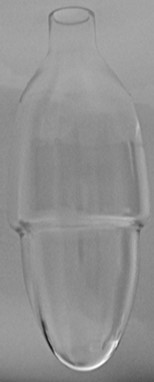What has happened?
- The EU General Court has upheld a ruling partially refusing the registration of an amphora-like 3D container shape (depicted below) as an EUTM.
- The application was refused on the basis that the essential elements of the shape had a technical function. The presence of one or more minor arbitrary elements in a sign does not alter the fact that, overall, the sign consists exclusively of the shape of the goods necessary to achieve a technical effect.
- The mark had been initially objected to for lack of distinctiveness, an objection that was ultimately overcome on appeal to the General Court. It held that the mark was distinctive due to the curved shape in the centre of the container and the ridge which added aesthetic value.
- However, when the case was remitted back to the Board of Appeal for it to implement the ruling on distinctiveness, it raised a further ground of objection; that the mark consists exclusively of the shape (or another characteristic) of goods which is necessary to obtain a technical result. It is this objection that has now been unsuccessfully appealed.
- The case is a reminder that the EUIPO (Examination Division and/or Board of Appeal) can raise objections against an application up until it is formally accepted for registration (as can the UKIPO). Moreover, positive comments about the shape having aesthetic elements in the context of considering distinctiveness might not be enough to save it from being rejected under the technical function ground.

Want to know more?
The background
An application for the above 3D sign consisting of the shape of an amphora-like container was filed by Wajos GmbH for various foodstuffs in Class 29.
It was initially refused registration by the EUIPO, as the Examiner deemed the shape lacked distinctive character for all the goods applied for (the "First Decision"). Wajos GmbH appealed this decision but was unsuccessful as the First Board of Appeal determined that the mark represented a mere variation of the customary shape and presentation of a bottle. The applicant further appealed the decision to the General Court.
In 2018, the General Court annulled the First Decision and determined that the shape did in fact have distinctive character (the "Second Decision"). It held that the combination of the elements that made up the mark applied for was special due to the distinctively curved shape in the centre of the container, to which consumers would not be accustomed. The Court also held that the shape of the bottle was "'truly specific" and the ridge separating the top and bottom halves of the bottle added aesthetic value to the mark.
While the General Court agreed with the findings of the EUIPO that the beads separating the wider upper part from the narrower lower part of the container were a technical feature, it held that there was a sufficient aesthetic element to result in a finding of distinctiveness.
A further appeal (by the EUIPO) before the ECJ was then rejected and the case was remitted back to the Board to Appeal for it to adopt the ruling on distinctiveness. However, the Board of Appeal then raised a further ground of refusal – that the mark consists exclusively of the shape (or another characteristic) of goods which is necessary to obtain a technical result (Article 7(1)(e) of the EUTMR). This objection was then appealed to the General Court.
Appeal to the General Court
The appeal was based on two pleas by the trade mark applicant: (i) infringement of res judicata and (ii) infringement of Article 7(1)(e).
The applicant stated that the Board of Appeal disregarded the findings of the Second Decision, which held that the shape did not consist solely of technical and functional features, with the beads conferring an aesthetic value. The applicant further asserted the Board of Appeal was in violation of the principle of functional continuity and erred in finding that the registration of the shape applied for was subject to the grounds stipulated in Article 7(1)(e).
Why did these claims fail?
The alleged infringement of the principle of res judicata was considered not to have been established, as res judicata extends only to those questions of fact or law which have been the subject of a judicial decision. The Second Decision was based solely on another ground for refusal, namely, the distinctive character of the mark, and as established by prior case law various grounds for refusal can be invoked without stipulating a sequence in which those grounds are examined (Bang & Olufsen v OHIM T-508/08).
Furthermore, the applicant's argument concerning infringement of the principle of functional continuity failed as it was determined that the Court was entitled to reopen the examination procedure concerning the application if it found that the shape in question fell within the scope of another absolute ground for refusal and especially as the legal interest between the two provisions were different (Article 7(1)(e) being to prevent a monopoly by trade mark law on technical solutions or performance of goods). This meant that each ground had to be examined independently and separately.
The General Court submitted that it established the essential characteristics of the shape, which the applicant did not dispute, and concluded that all the characteristics corresponded to a technical function for the goods applied for. The applicant was unable to present any additional elements of the shape, of a non-functional nature, that played an important role. The Court reiterated that the three grounds for refusal provided in Article 7(1)(e) are independent and as long as one of the obstacles is fully applicable, that is enough to bar registration.
For the reasons set out above, the General Court maintained that the Second Board of Appeal correctly held that the sign applied for did not satisfy Article 7(1)(e). It was therefore not necessary to further consider whether there was any infringement of such provision.
This article was primarily authored by Julia Marke.






